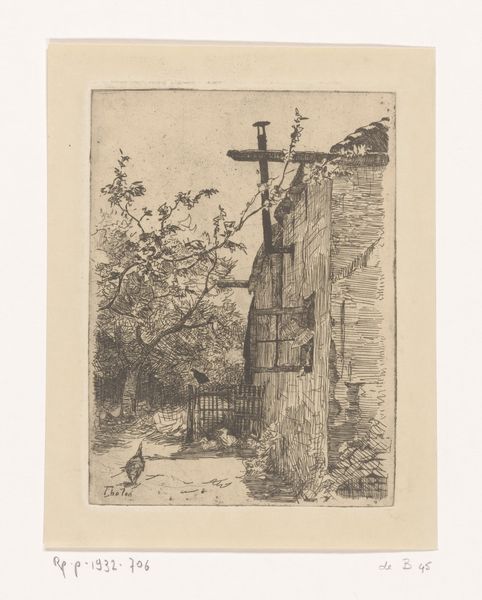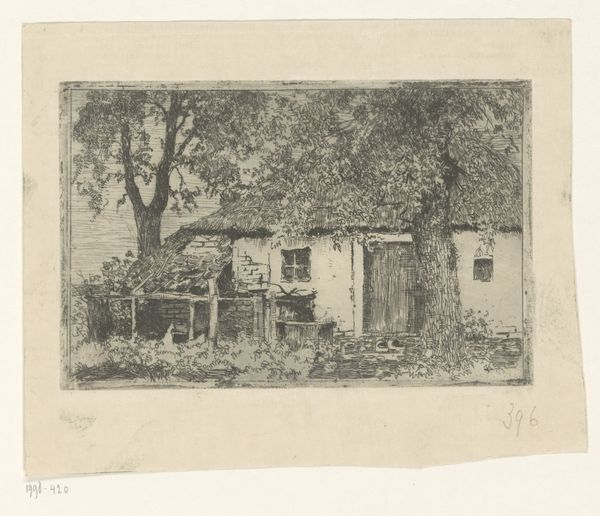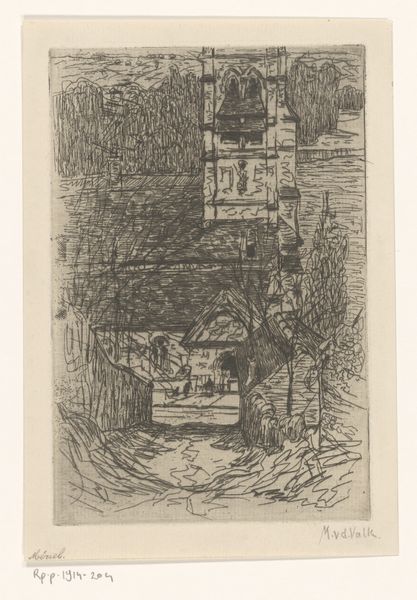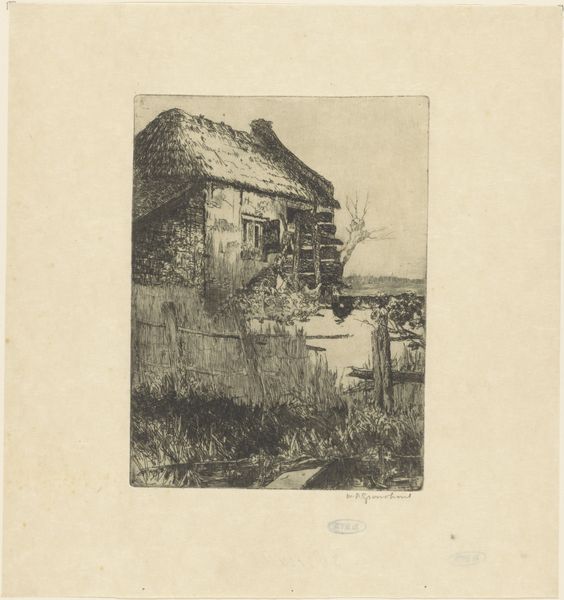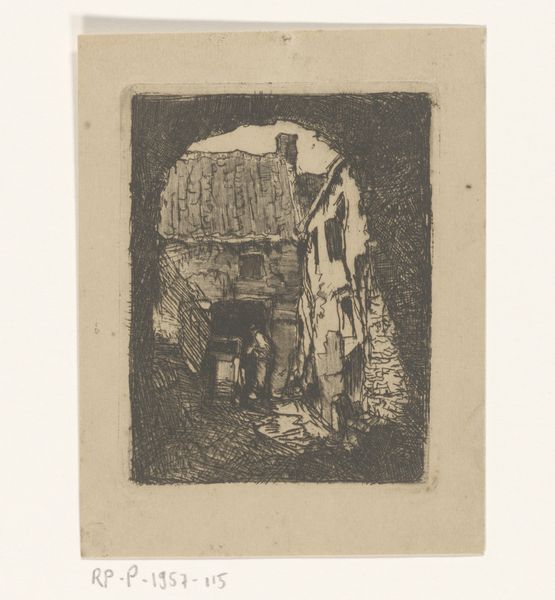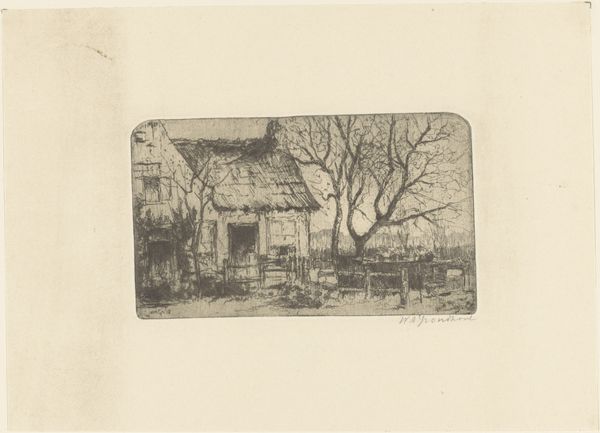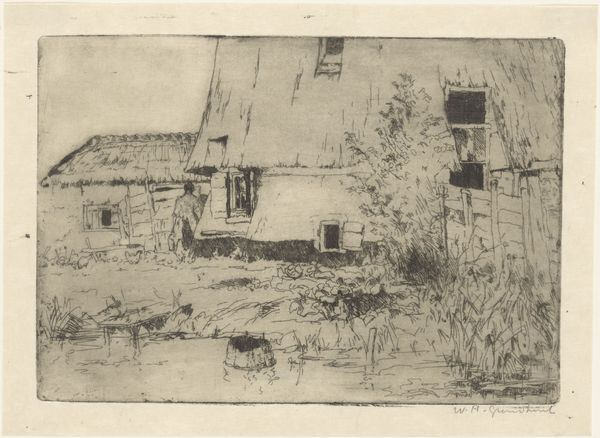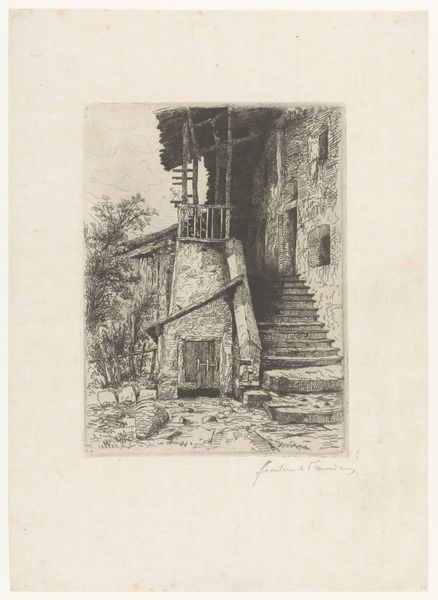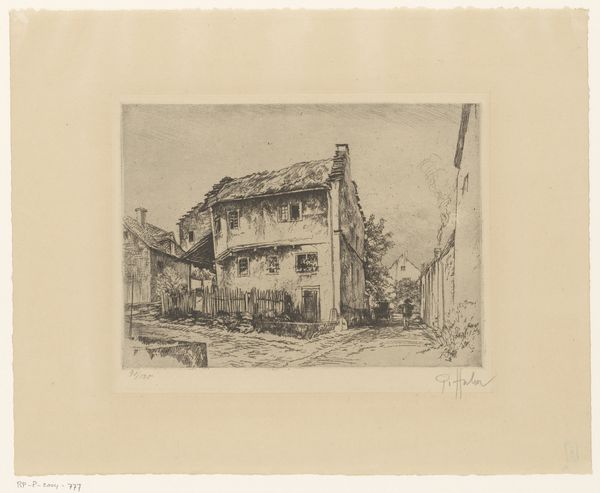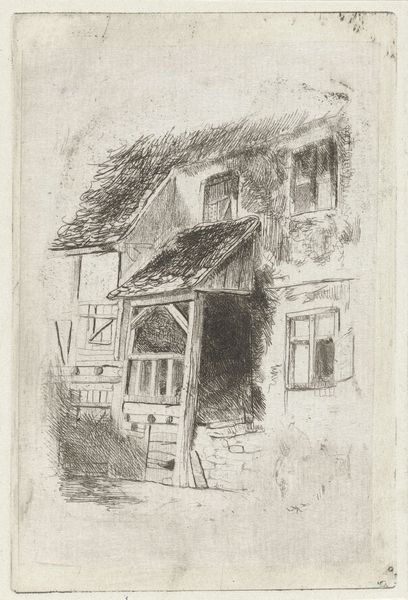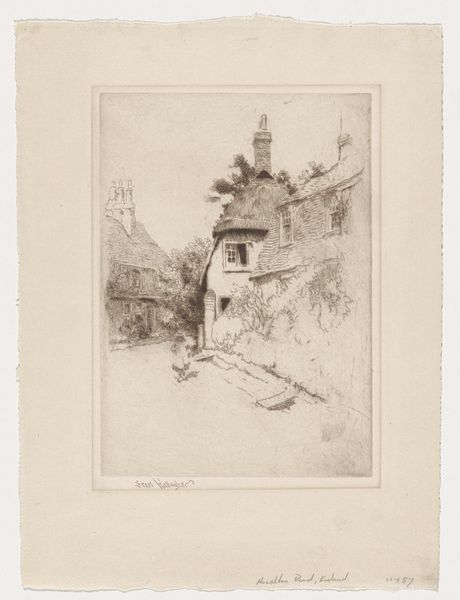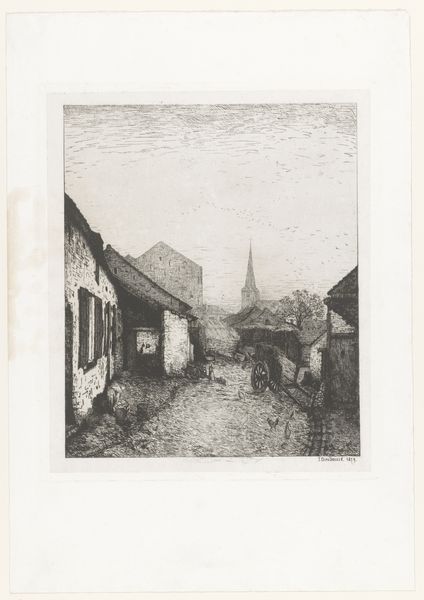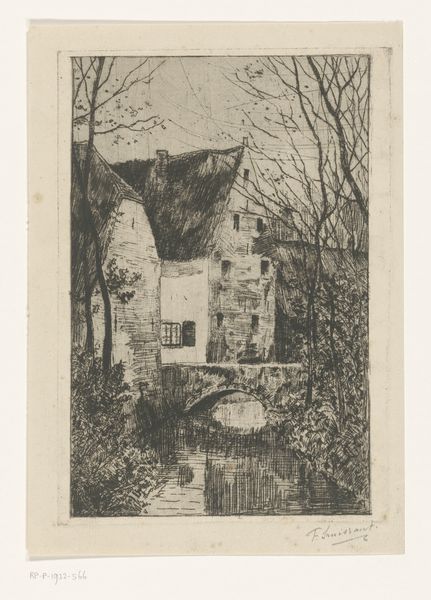
drawing, print, etching, paper
#
drawing
# print
#
etching
#
landscape
#
paper
#
italian-renaissance
#
watercolor
Dimensions: 115 × 82 mm (image/plate); 150 × 112 mm (sheet)
Copyright: Public Domain
Curator: Standing before us is "Siena," a 1905 etching by Donald Shaw MacLaughlan, currently residing here at The Art Institute of Chicago. It's rendered on paper, typical for prints of that era. What’s your initial take? Editor: My eye is drawn immediately to the domesticity; it’s humble, everyday life captured. The women standing there, the washing hanging, it all feels so intimate. I find it beautiful, honestly, how such ordinariness can be so deeply moving. Curator: Absolutely. MacLaughlan, particularly in his prints, was so attuned to the interplay between light, shadow, and architectural form. Notice how the texture of the stone and the play of light really convey the labor inherent in constructing such buildings—buildings meant to last for generations. He treats his etching almost as if it were architectural drawing or social commentary, where craft and utility comingle. Editor: And those figures! Positioned casually in the lower left corner, they inject a narrative. It's not just buildings; it’s a scene populated by ordinary citizens. The presence of what seems to be a farm animal gives you this sense of shared spaces between humans and nature, really highlighting the symbiosis of rural communities. Curator: Yes, MacLaughlan had such a deep fascination for urban centers and sites of industry and commercial life as subjects for artistic intervention. It is striking to notice how, in depicting seemingly picturesque architecture, his treatment also considers these spaces to be intertwined in material production and consumption. Editor: Precisely. And the architectural elements—that stone wall, the humble door. It is as much about showing place and community but also speaking to the experiences of the many inhabitants—women in particular. What this etching shows to us are the quiet, mundane labors performed and how intrinsic they are to communal memory-making and preservation of the landscape and community life in Italy. Curator: Indeed. The technique itself also interests me – how the ink lies on the paper, almost velvety. The labor in creating that impression, how that process mirrors the labor captured in the image... Editor: MacLaughlan is definitely spotlighting lives normally lived and labors rarely witnessed, while raising critical insights about history. Looking at "Siena" gives me such an enriching, thoughtful, perspective to think about art. Curator: Likewise. It serves as a reminder of the value and impact in connecting historical context and labor to such arresting landscapes.
Comments
No comments
Be the first to comment and join the conversation on the ultimate creative platform.
